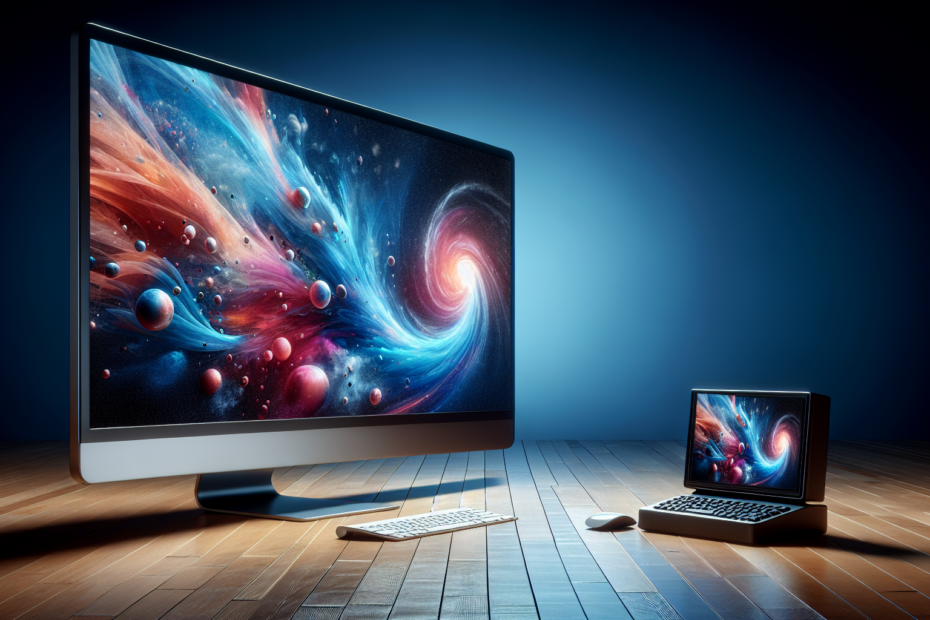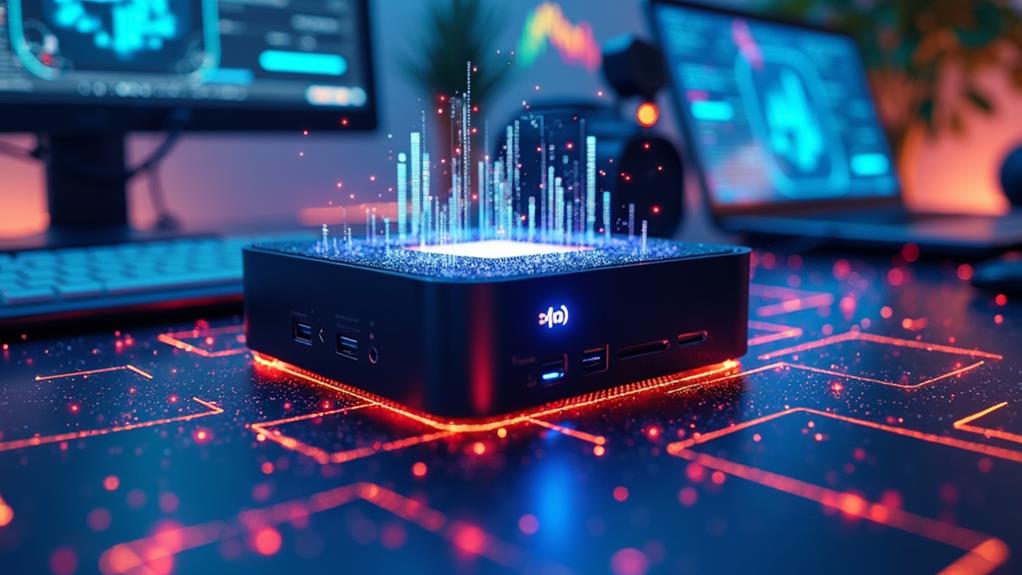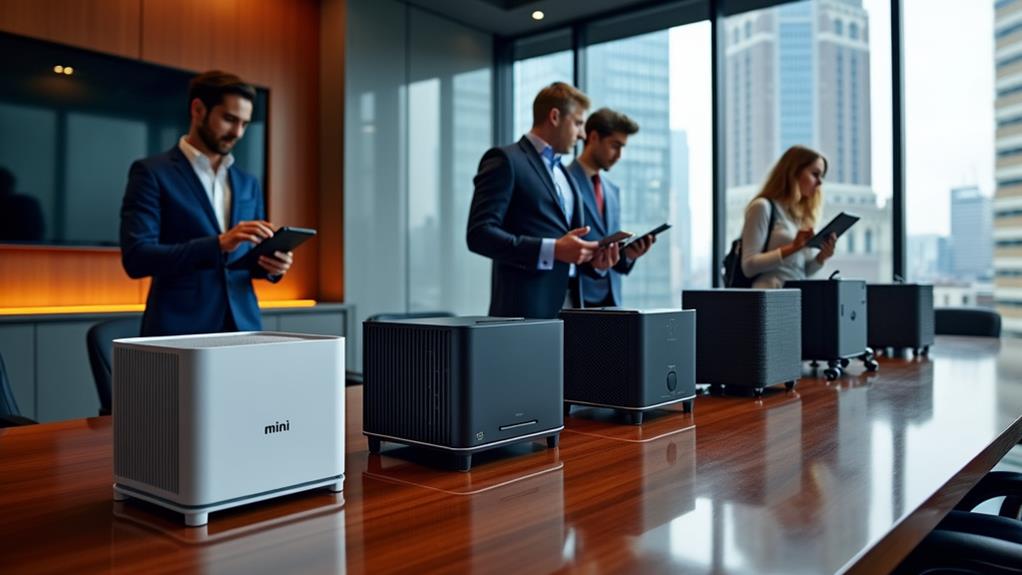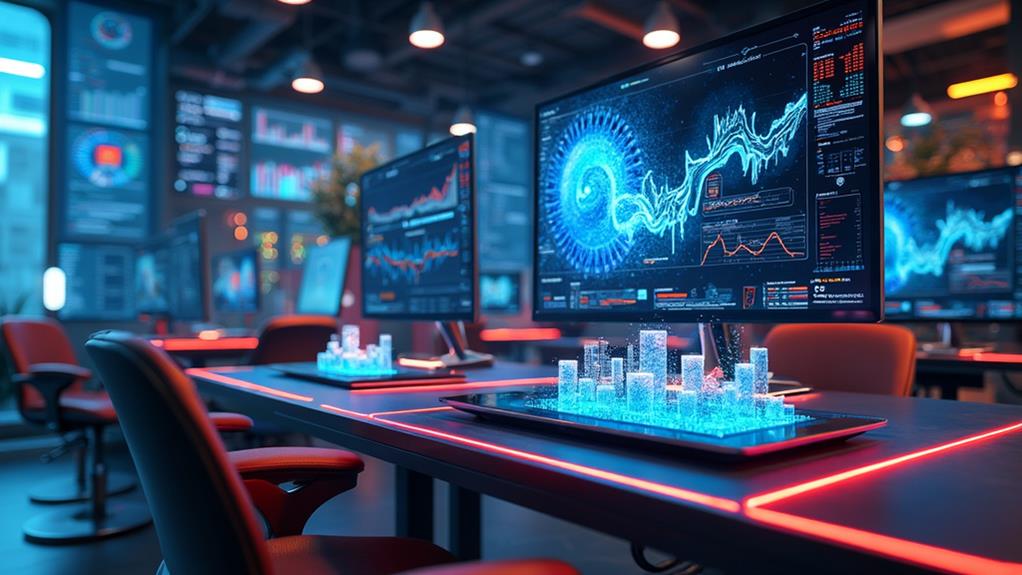



Have you ever wondered just how big of a monitor you can connect to a mini PC? If so, you’re in luck! In this article, we will explore the possibilities and limitations of using a mini PC with various monitor sizes. From compact screens to larger-than-life displays, we’ll uncover the ideal options for maximizing your viewing experience with a mini PC. So, whether you’re a casual user or a dedicated gamer, read on to discover the perfect monitor size for your mini PC setup.
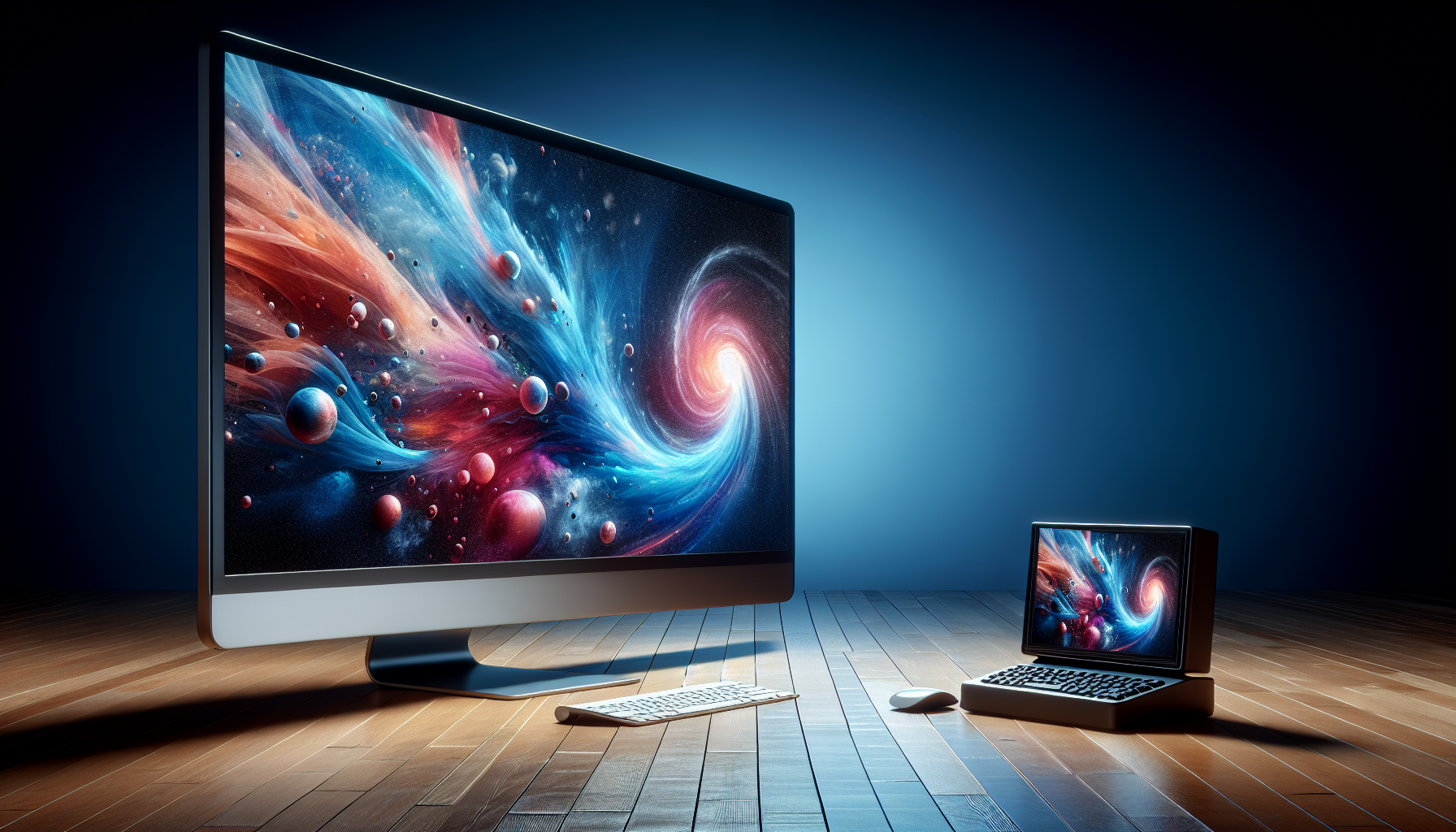
Connection options
When it comes to connecting your mini PC to a monitor, there are several options to choose from. Each connection option has its own advantages and capabilities, so it’s important to consider your specific needs and requirements. Here are some of the most common connection options:
HDMI
HDMI (High-Definition Multimedia Interface) is a widely used connection option for both audio and video transmission. It supports high-definition resolutions and can carry both audio and video signals in a single cable. HDMI is commonly found on most modern monitors and mini PCs, making it a convenient choice for most users.
DisplayPort
DisplayPort is another popular connection option for high-definition video and audio transmission. It offers a wide range of features, including support for higher resolutions and refresh rates. DisplayPort is commonly found on high-end monitors and mini PCs, making it a great choice for users who require advanced display capabilities.
VGA
VGA (Video Graphics Array) is an older connection option that is still commonly used today, especially on older monitors and mini PCs. While it may not offer the same level of quality and resolution as HDMI or DisplayPort, VGA can still be a viable option for users with older hardware or specific compatibility requirements.
DVI
DVI (Digital Visual Interface) is another older connection option that is still widely used on many monitors and mini PCs. It offers support for both analog and digital signals, making it compatible with a wide range of devices. DVI is available in several different variants, including DVI-D and DVI-I, each with its own capabilities and features.
Thunderbolt
Thunderbolt is a high-speed connection option that combines data, video, and power transmission into a single cable. It offers blazing-fast data transfer speeds and can support multiple monitors with daisy-chaining. Thunderbolt is commonly found on high-end monitors and mini PCs, making it a great choice for users who require maximum performance and versatility.
Resolution capabilities
The resolution of a monitor refers to the number of pixels it can display horizontally and vertically. Higher resolutions result in sharper and more detailed images, but they also require more powerful hardware to drive. Here are some of the most common resolution options available:
Full HD (1920×1080)
Full HD, also known as 1080p, is the most common resolution found on monitors and mini PCs. It offers excellent image quality and is suitable for most everyday tasks, including web browsing, document editing, and media consumption. Full HD is a popular choice for users who prioritize affordability and compatibility.
2K (2560×1440)
2K, also known as QHD (Quad High Definition), offers a higher resolution compared to Full HD. It provides even sharper and more detailed images, making it ideal for tasks that require more screen real estate, such as photo and video editing. 2K monitors are a great choice for users who want a balance between affordability and enhanced visual quality.
4K UHD (3840×2160)
4K UHD, also known simply as 4K, offers four times the resolution of Full HD. It delivers incredibly sharp and detailed images, making it perfect for tasks that demand the highest level of visual quality, such as professional photo and video editing, graphic design, and gaming. However, 4K monitors and mini PCs require powerful hardware to drive the increased pixel count.
8K (7680×4320)
8K is the latest and highest resolution available in the consumer market. It offers an astonishing level of detail and clarity that is unmatched by any other resolution. 8K monitors are primarily used in professional settings, such as video production studios and medical imaging, where the highest level of precision is required. However, due to its high cost and demanding hardware requirements, 8K is not yet widely adopted by consumers.
Screen size considerations
Another important factor to consider when choosing a monitor for your mini PC is the screen size. The screen size directly affects the overall viewing experience and the amount of visible content. Here are some common screen size categories you can consider:
Small monitors (less than 20 inches)
Small monitors are compact and portable, making them ideal for users who value mobility and space-saving solutions. They are perfect for tasks that don’t require a large amount of screen real estate, such as web browsing, email, and basic productivity. Small monitors are a great choice for users who have limited desk space or frequently travel with their mini PC.
Medium-sized monitors (20 to 27 inches)
Medium-sized monitors strike a good balance between screen real estate and physical footprint. They offer a larger viewing area compared to small monitors, making them suitable for a wide range of tasks, including productivity, multimedia consumption, and casual gaming. Medium-sized monitors are the most popular choice among consumers due to their versatility and affordability.
Large monitors (above 27 inches)
Large monitors provide an expansive viewing experience and are ideal for tasks that require a significant amount of screen real estate, such as video editing, gaming, and multitasking. They offer a more immersive experience and can enhance productivity and entertainment. However, large monitors require more space and may not be suitable for users with limited desk space.
Graphics processing power
The graphics processing power of your mini PC plays a crucial role in determining the visual capabilities and performance of your monitor. There are two main categories of graphics processing:
Integrated graphics
Integrated graphics refer to the graphics processing capabilities that are built into the CPU (Central Processing Unit) of your mini PC. They provide basic graphics performance and can handle everyday tasks such as web browsing, document editing, and multimedia consumption. Integrated graphics are generally more power-efficient and affordable compared to dedicated graphics solutions.
Dedicated graphics
Dedicated graphics, also known as discrete graphics, refer to a separate graphics card that is installed in your mini PC. They offer significantly higher graphics processing power and are capable of handling more demanding tasks, such as gaming, video editing, and 3D rendering. Dedicated graphics are essential for users who require enhanced visual performance and want to maximize the capabilities of their monitor.
Multi-monitor setup
If you require a larger workspace or want to enhance your productivity further, a multi-monitor setup might be the right choice for you. With multiple monitors connected to your mini PC, you can have more screen real estate and run multiple applications simultaneously. Here are some common multi-monitor setups:
Dual monitor setup
A dual monitor setup involves connecting two monitors to your mini PC. This configuration is popular among professionals and gamers who need to multitask or want a larger workspace. Dual monitor setups can significantly boost productivity and make it easier to manage multiple applications and windows.
Triple monitor setup
A triple monitor setup involves connecting three monitors to your mini PC. This configuration offers even more screen real estate and is ideal for users who require extensive multitasking or work with applications that benefit from a wider field of view, such as video editing or stock trading. Triple monitor setups provide an immersive experience and can enhance productivity further.
More than three monitors
For users who need an even larger workspace or want to create a truly immersive gaming experience, it is possible to connect more than three monitors to your mini PC. However, the number of monitors you can connect depends on the graphics processing power of your mini PC and the available ports. It is important to check the specifications of your mini PC and graphics card to ensure compatibility and optimal performance.
Ultra-wide monitors
If you’re looking for a more immersive viewing experience, ultra-wide monitors can be a great choice. These monitors have a wider aspect ratio compared to traditional monitors, providing a wider field of view. Here are some factors to consider when choosing an ultra-wide monitor:
Ultra-wide aspect ratios
Ultra-wide monitors typically have an aspect ratio of 21:9 or even 32:9 in some cases. This wider aspect ratio allows for a more cinematic experience and provides extra horizontal space for multitasking and immersive gaming. However, it is important to note that not all applications and games are optimized for ultra-wide resolutions, so compatibility may vary.
Curved vs flat
Ultra-wide monitors are available in both curved and flat designs. Curved monitors offer a more immersive and panoramic viewing experience, as they mimic the natural curvature of the human eye. On the other hand, flat monitors provide a more traditional viewing experience and may be more suitable for users who require precise color accuracy or work with graphic design applications. The choice between curved and flat ultimately comes down to personal preference and the intended use of the monitor.
Screen size options
Ultra-wide monitors come in various screen sizes, ranging from 29 inches to over 49 inches. The larger the screen size, the more immersive the viewing experience, but also the more physical space it requires. It is important to consider your desk space and seating distance when choosing the screen size of an ultra-wide monitor. Additionally, larger screen sizes may require more powerful hardware to drive the increased pixel count.
Gaming capabilities
If gaming is a priority for you, it’s essential to consider the specific gaming capabilities of your monitor and mini PC. Here are some important factors to keep in mind:
Refresh rate
The refresh rate of a monitor refers to the number of times it can refresh the image on the screen per second. Higher refresh rates result in smoother and more fluid motion, which is especially important in fast-paced games. Most monitors offer a standard refresh rate of 60Hz, but gaming monitors can go as high as 240Hz or even higher for ultra-competitive gaming. When choosing a gaming monitor, aim for a higher refresh rate for the best gaming experience.
Response time
The response time of a monitor refers to the speed at which pixels can change from one color to another. Lower response times result in reduced motion blur and ghosting, which are crucial for fast-paced games. Gaming monitors typically have response times of 1ms or lower, ensuring minimal input lag and smooth gameplay. It’s important to prioritize monitors with low response times for optimal gaming performance.
G-Sync and FreeSync support
G-Sync and FreeSync are adaptive sync technologies that synchronize the refresh rate of your monitor with the graphics card’s output, effectively reducing screen tearing and stuttering. G-Sync is developed by NVIDIA, while FreeSync is developed by AMD. If you have a NVIDIA graphics card, look for monitors with G-Sync support, and if you have an AMD graphics card, look for monitors with FreeSync support. These technologies can significantly enhance the gaming experience and ensure smooth and tear-free gameplay.
Compatibility with mini PC models
When choosing a monitor for your mini PC, it’s important to ensure compatibility with your specific model. Here are some mini PC models that are commonly used with monitors:
Intel NUC
Intel NUC (Next Unit of Computing) is a line of mini PCs designed and produced by Intel. They are known for their compact size and low power consumption. When choosing a monitor for an Intel NUC, make sure it has the appropriate ports and supports the desired resolution and features.
ASRock DeskMini
ASRock DeskMini is another popular mini PC series known for its small form factor and impressive performance. Before purchasing a monitor for an ASRock DeskMini, verify the available ports and check for compatibility with the desired resolution and features.
Lenovo ThinkCentre
Lenovo ThinkCentre is a well-known series of mini PCs that are widely used in both home and business environments. When choosing a monitor for a Lenovo ThinkCentre, consider the available ports and ensure compatibility with the desired resolution and features.
HP EliteDesk
HP EliteDesk is a range of mini PCs designed for professional use, offering excellent performance and reliability. Before selecting a monitor for an HP EliteDesk, confirm the available ports and check for compatibility with the desired resolution and features.
Power and performance considerations
Power and thermal management are important considerations when choosing a monitor for your mini PC. Here are some factors to keep in mind:
Power requirements
Different monitors have varying power requirements, so it’s important to ensure that your mini PC can adequately power the monitor you choose. Check the power specifications of both your mini PC and the monitor to ensure compatibility. Additionally, consider the power efficiency of the monitor, especially if you plan on using it for extended periods or leaving it on standby.
Thermal management
Mini PCs, especially those with powerful hardware, can generate a significant amount of heat. Ensure that the monitor does not obstruct the airflow or ventilation of your mini PC to prevent overheating. If possible, choose a monitor with built-in cooling mechanisms or opt for a separate cooling solution to maintain optimal performance and longevity.
Choosing the right monitor
With so many factors to consider, choosing the right monitor for your mini PC can feel overwhelming. Here are some tips to help you make an informed decision:
Prioritize your needs
Start by identifying your specific needs and requirements. Consider the tasks you’ll be performing on your mini PC and prioritize what’s most important to you. Do you need a high-resolution display for graphic design or video editing? Are you a gamer looking for a monitor with a high refresh rate and low response time? Understanding your needs can help you narrow down the options and find a monitor that aligns with your priorities.
Consider your budget
Setting a budget is essential when choosing a monitor. Prices can vary significantly based on the size, resolution, features, and brand of the monitor. Determine how much you’re willing to spend and look for monitors within your budget range. Keep in mind that investing in a higher-quality monitor can result in better performance and longevity.
Read reviews and do research
Before making a final decision, read reviews and do thorough research on the monitors you’re considering. Look for professional reviews, user testimonials, and comparisons to gain insight into the performance, reliability, and overall experience offered by the monitors. This research will help you make an informed decision and ensure that you choose a monitor that meets your expectations.
In conclusion, choosing the right monitor for your mini PC involves considering various factors such as connection options, resolution capabilities, screen size, graphics processing power, gaming capabilities, compatibility with mini PC models, power and performance considerations, and personal needs. By understanding these factors and evaluating your specific requirements, you can find a monitor that complements your mini PC and enhances your overall computing experience.
Disclosure: As an Amazon Associate, I earn from qualifying purchases.
